
Greetings Friends,
This newsletter includes Larrakia and consultation, support for Save Lee Point, call from scientists, Binybara Camp, plants and wildlife.
1.0 Larrakia and consultation
It’s been a busy month with bad and good things happening. Starting with arrests, bulldozing old growth trees and finally a statement by DHA (see below) to pause work. This statement brought much relief and joy to the Save Lee Point supporters.

People celebrating the DHA statement near the gate where many people were arrested in July 2023.
The announcement (DHA statement) was covered by many news outlets including; ABC, Channel Nine, NT News, NT Independant, Guardian, Yahoo News
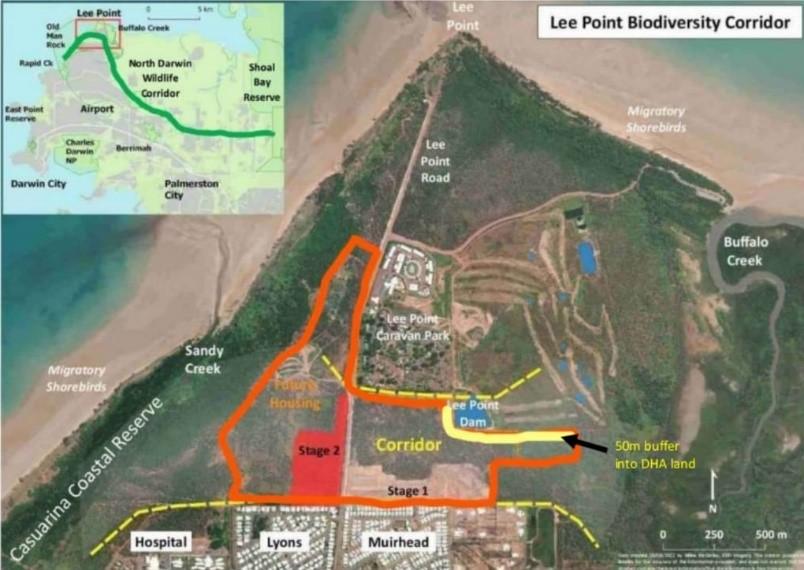
Map showing DHA Stage 2 (red) and extent of clearing works (orange), 50m buffer for Gouldian Finch (yellow line).
The planned DHA development at Lee Point will remove the majority of old growth trees from Lee Point and a significant number from the North Darwin Wildlife Corridor. Lee Point is crucial for the long term success of the North Darwin Wildlife Corridor and the Territory’s most popular reserve, Casuarina Coastal Reserve.
Without old growth trees with hollows many of our native species will not breed.
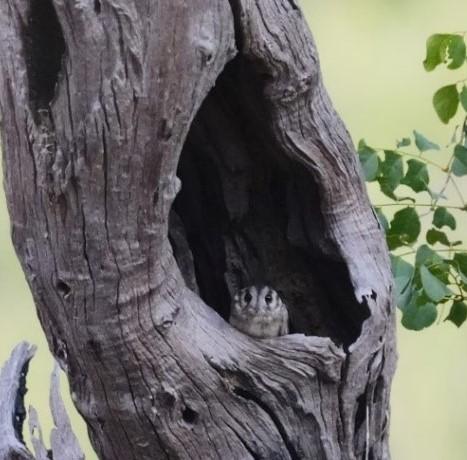
This Owlet-nightjar faces an uncertain future being in a tree that will be cleared by the planned DHA development – photo July 2023
What you can do
Send a letter to the people who can stop this senseless destruction of Lee Point (Binybara) using these links:
Planning for Lee Point is needed before any major development happens at Lee Point.
2.0 Support for Save Lee Point
Larrakia people and the vast majority of the Darwin community want the development halted and the DHA housing built elsewhere. Support for this has been growing.
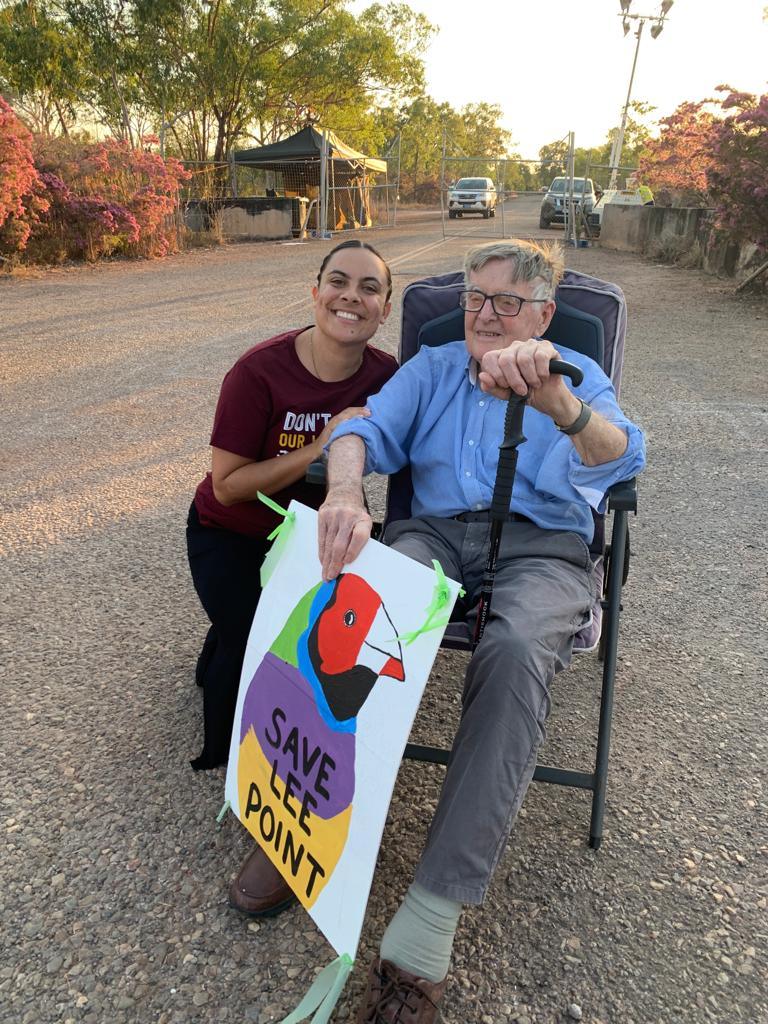
Bill (93 years old) with Mililma May (Larrakia). This is Bill’s first protest.

The Darwin Syncettes (synchronised swimming team)
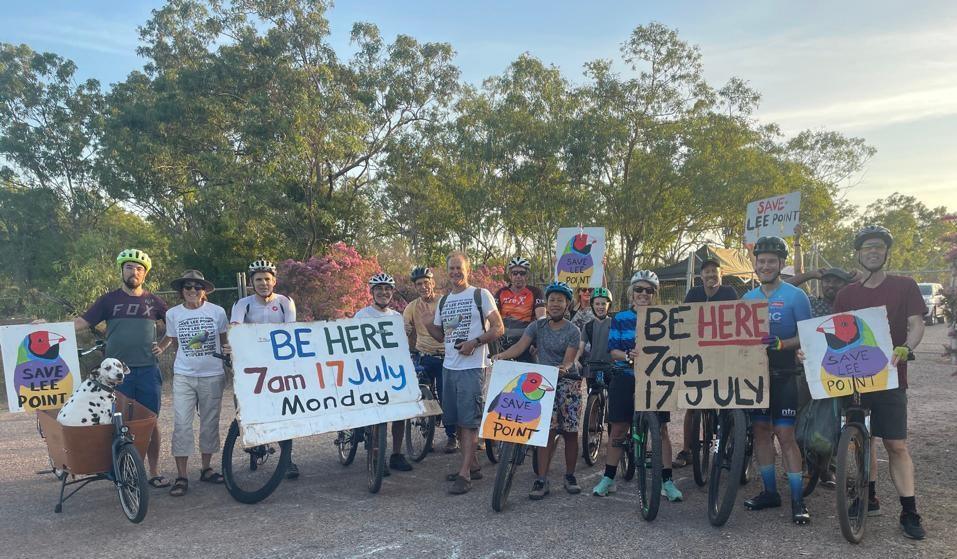
Bike riders near the gate
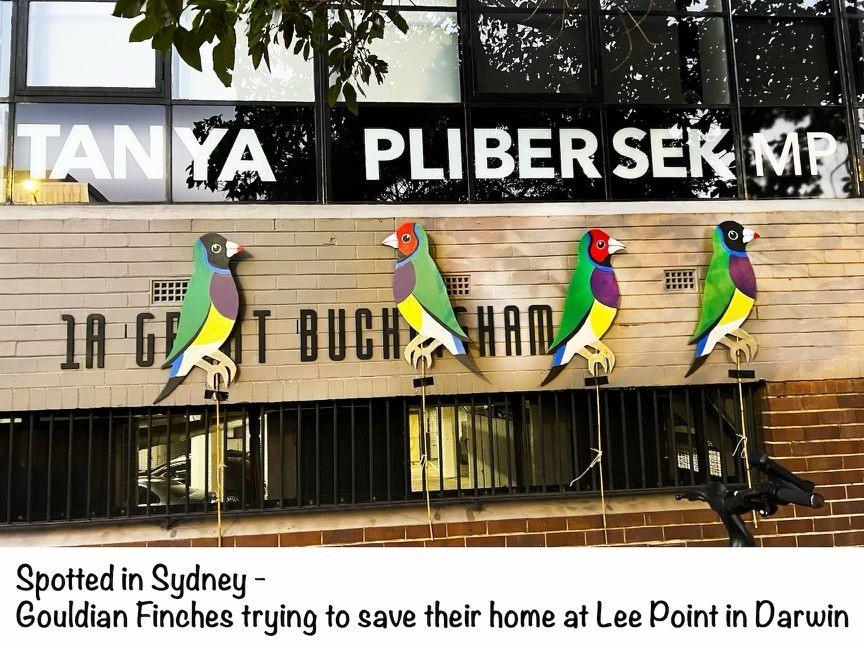
“Would you change your vote to Save Lee Point”
98% have said YES
An on-line survey by Planning Action Network (PLAN) on this question has had 264 respondents so far with 258 saying YES. Notwithstanding some bias in the survey – the respondents want to take action on Lee Point, the message is clear, people want to have their say on the future of Lee Point.
Scientists call for a halt to works at Lee Point
Over 300 scientists and experts have called for an immediate halt to the defence housing development at Lee Point (Binybara), refer The Conversation article
The Biodiversity Council opposes the development of a Defence Housing Project at Binybara (Lee Point) north of Darwin; at a site of very high ecological and cultural value. Read what respected scientists had to say about the DHA development at Lee Point.
Hopefully Matt Thistlethwaite (minister directly responsible for DHA) and Tanya Plibersek (minister responsible for the environment) will listen to the science and the community.
3.0 Binybara Camp and public meetings
The Binybara Camp (Lee Point) provided an important focus for the Save Lee Point campaign in July, and was continuously occupied from late June to 6 August (35 days). It gave people a chance to talk about Lee Point and enjoy free music, film and yoga. It still operates as a place for information.
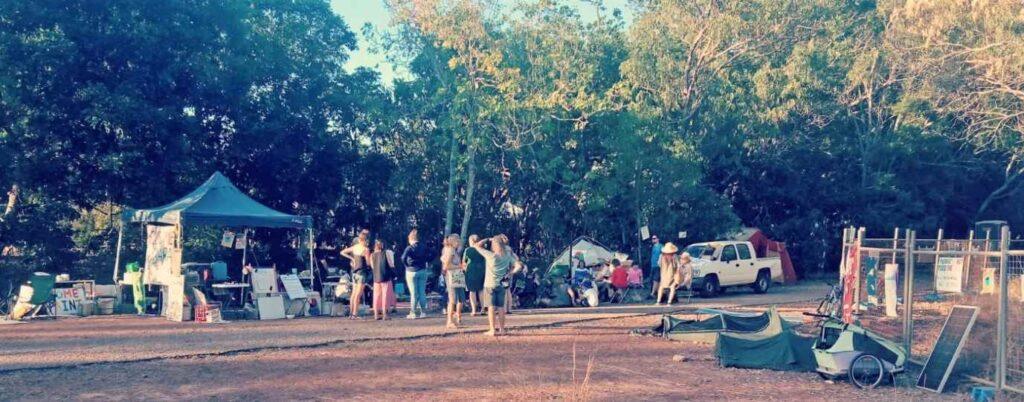
Binybara Camp July 2023
The Binybara Vigil happens from 4pm each Sunday and has included indigenous music/stories (songlines), painting, birdwatching and presentations.
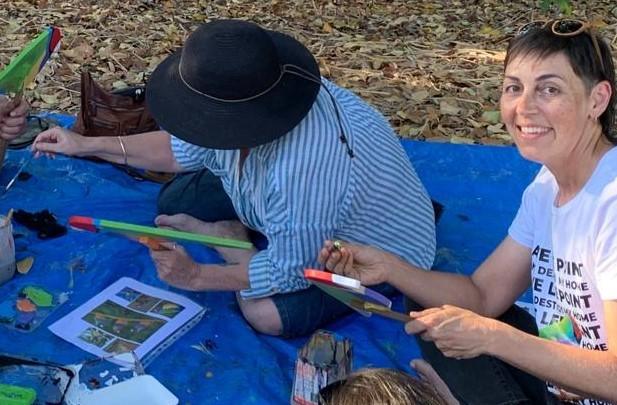
“Microlite Milly” (Milly Formby) dropped into the camp 3 Aug and gave a talk on migratory shorebirds. Seen here painting a gouldian cutout near the camp.
Wing Threads is a fascinating (10 minute) video of Milly flying her microlite around Australia to raise awareness on threatened migratory shorebirds, such as these;
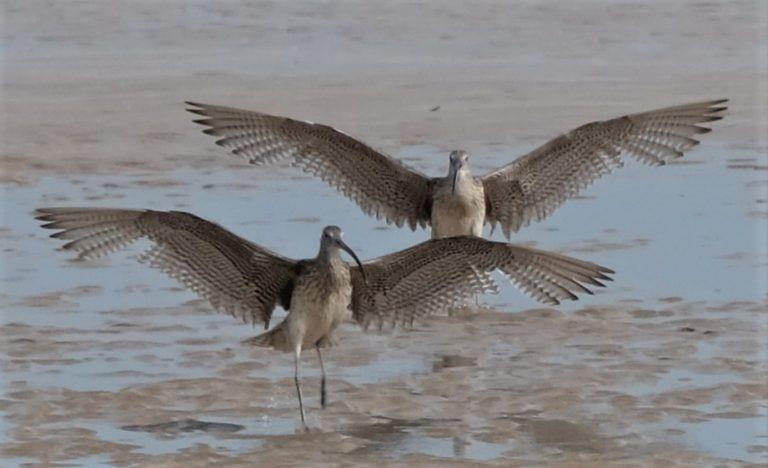
Endangered Eastern Curlews are expected to arrive at Lee Point in August/September from the arctic circle i.e. Siberia
One day Milly hopes to follow migratory shorebirds to the arctic circle in her microlite.

Crowd from one of the presentations at the Sunday Binybara Vigil
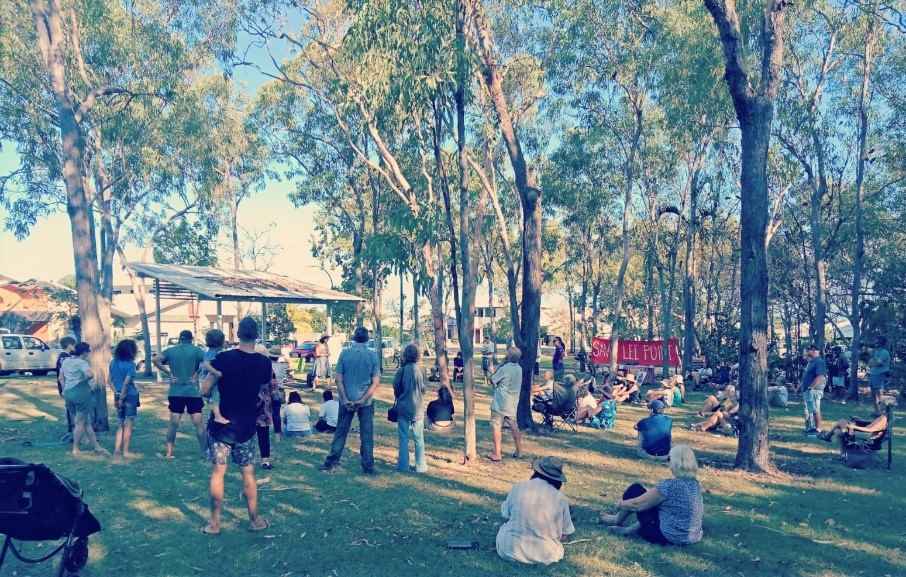
Public meeting at Bilingga Park – Lyons on the Lee Point development 29 July 2023. The event was organised by Plan: the Planning Action Network and Friends of Lee Point.
Andrew Bell, convenor of NT Field Naturalists, and other speakers, believed that the wildlife we now see at Lyons would decline if the Lee Point development went ahead.
4.0 Quiz
Q1. These animals live or visit Lee Point. Which one doesn’t rely on a tree hollow.
- Blue-winged kookaburra
- Black-footed tree-rat (endangered)
- Green pygmy geese
- Rajah Shelduck (protected)
- Northern brushtail possum (vulnerable)
- Gouldian finch (endangered)
- Northen brown bandicoot
- Red-tailed black cockatoo
- Northern Rosella
- Rufous Owl
5.0 Plants and Wildlife from the Biodiversity Corridor
All images taken in July unless noted otherwise.
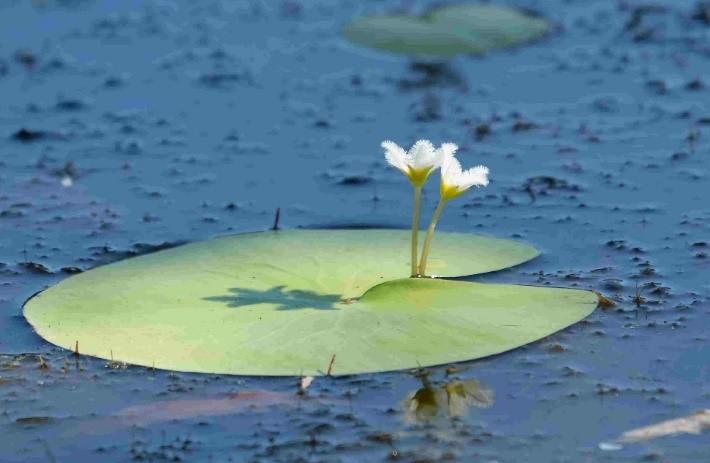
Snowflake water lily on the Lee Point dam
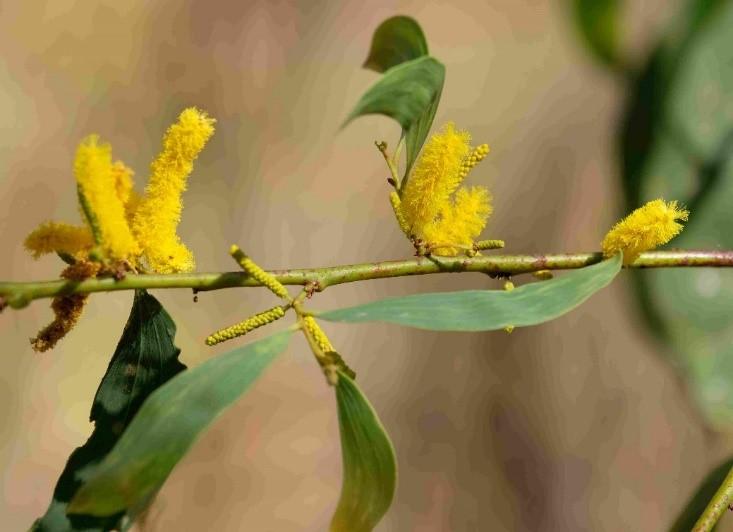
Wattle (Acacia spp)
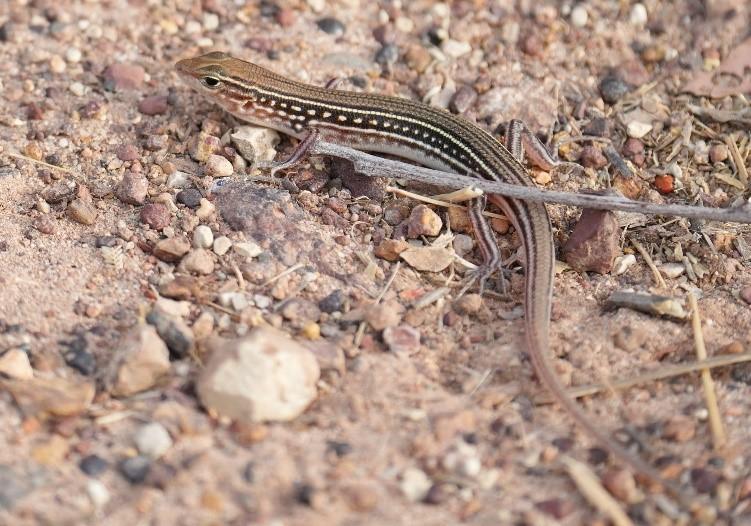
Skink by Samantha Duffy
Bird walks run by volunteers started at Binybara Camp 5pm during the week by Birdlife Top End and 7am and 5pm on the weekends by FLP during July. Over half the bird walks recorded more than 30 species. James Lambert recorded an amazing 50 species on the 15 July.
There were some interesting bird sightings during July, here are some of them:
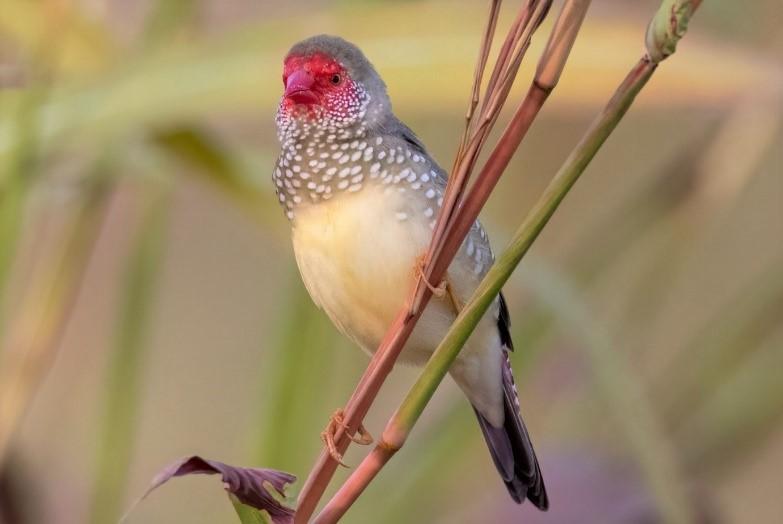
Star finch by Tobias Aakenssen
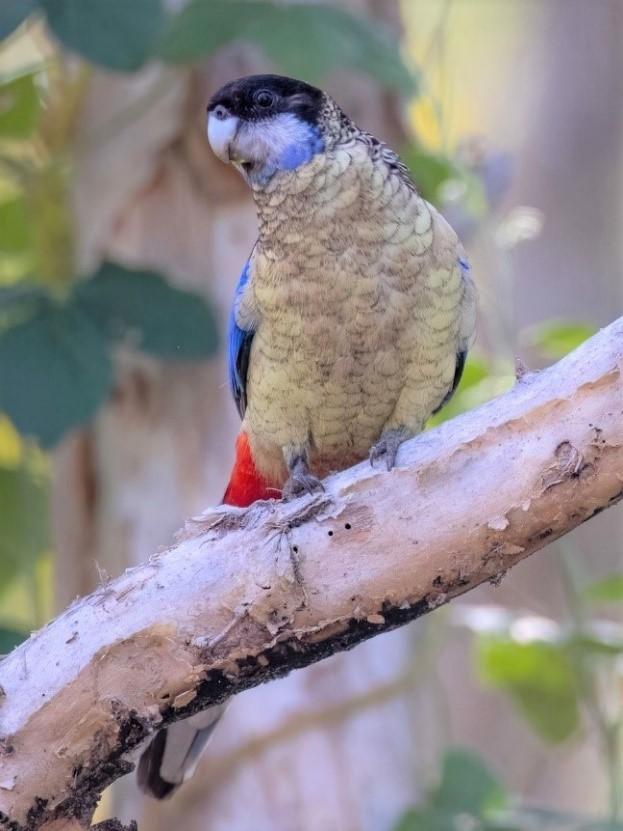
Northern Rosella by Mitch
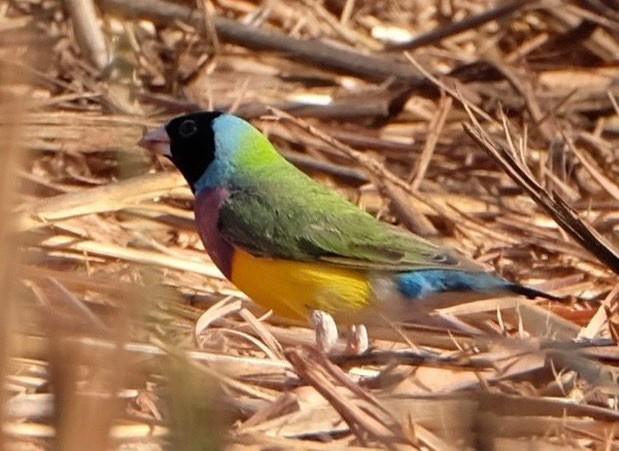
Gouldian finch by Simone Martin (5 Aug 2023).
For the latest list of sightings in the Muirhead part of the corridor – see ebird
More images of plants and wildlife at Images from Lee Point Biodiversity Corridor.
Enjoy the dry season at Lee Point
Answers to Quiz